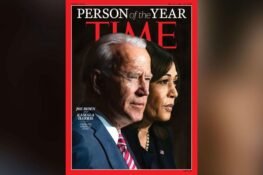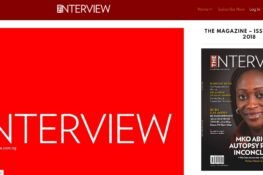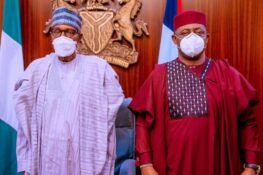Vice President Yemi Osinbajo says there is a projection that Nigeria’s leather industry has the potential to generate over 1 billion dollars by 2025.
Osinbajo disclosed this at the formal inauguration and sensitisation workshop on the National Leather and Leather Products Policy Implementation Plan on Tuesday in Abuja.
The vice president said leather value chain had created wealth and appreciable job opportunities in Nigeria.
“Nigeria is one of the highest producers of leather and finished leather products in Africa; a study carried out by the Nigerian Economic Summit Group (NESG) projected that the Nigerian leather industry has the potential to generate over 1 billion dollars by 2025.
“The leather value chain is extensive; it includes animal husbandry, tanneries, finished leather products and leather products marketing.
“The leather and leather products industry currently employs over 750,000 workers with about 500,000 workers in the finished leather goods sector.
“About eleven leather exporting companies have been active at the upstream end of the leather value chain; together, these companies generate about 8000 jobs.’’
He said that the export of leather had grown steadily reaching a peak of 117 million dollars in 2018 but fell in 2020 largely due to the COVID-19 pandemic.
Osinbajo said that Nigeria’s leather products and value chain had immense potential and attracted huge international patronage.
“To date, however, exports are in the order of 272 million dollars; today, Nigeria’s semi-finished and finished leather have their highest patronage in Italy, Spain, India, South Asia and China.
“Shoes, belts, bags and folders are largely traded in West Africa and many parts of Africa.
“Anecdotal evidence suggests that the famous Aba shoe cluster in Abia, informally exports almost a million pairs of shoes weekly mostly to destinations within Africa.
“ The industry is huge and its potential can only be imagined; so, there is no question that properly organised, the leather and leather products industry could become one of the major items in Nigeria’s export basket.’’
According to him, there is clearly an enormous potential for greater job opportunities and much higher export proceeds.
He said that the NESG projection also indicated that the Nigerian leather industry had the potential to increase its earnings by 70 per cent by 2025.
“This explains why the launch of the National Leather and Leather Products Policy Implementation Plan is such an exciting development.
“We now have a real opportunity to address the specific challenges and shortcomings of the leather sector with pragmatic strategies to permanently resolve these issues for optimal productivity.
“In particular, there is now a clear line of sight to our emergence as a major hub for the manufacture of leather goods with the refocusing of the leather sector to value addition from its previous focus on exporting semi-processed leather.
“A major part of that effort is improving access to credit for leather products manufacturers.’’
He said that the plan provided an opportunity to develop a credit guarantee scheme along the lines of the successful agricultural credit guarantee scheme.
Osinbajo said that more intentional infrastructure development had become possible.
“Our Special Economic Zones (SEZ) project already projected leather products manufacturing as a major focus, synergy and collaboration with Nigeria Export Processing Zones Authority (NEPZA) was all required at present.
“By optimising the value chain, the sector will provide employment, improve our foreign exchange earnings and boost growth.
“Consequently, it is evident that in terms of what we have set out to do through the policy and the implementation plan, the stakes are very high.
“The plan covers eight thematic areas including intellectual property rights, governance, E-leather, environmental and social best practices, marketing, funding, critical infrastructure and research and development.
“The plan is as all-encompassing as it is detailed; relevant MDAs, NGOs and the organised private sector are assigned specific responsibilities for the various objectives, and strategies of the plan.’’
He said that a central feature of the plan was the development of technical capacity in leather works and technology.
The vice president said that Nigerian Institute of Leather Science and Technology (NILEST), the arrowhead of the plan, had established nine extension centres across the six geo-political zones of Nigeria.
Earlier in a keynote address, Dr Ogbonnaya Onu, the Minister of Science and Technology, said the plan would help the effective and efficient exploitation of Nigeria’s natural resources.
Onu said that the plan would make the country self-reliant, enhance earning of foreign exchange as well as creating jobs and wealth.
(NAN)







